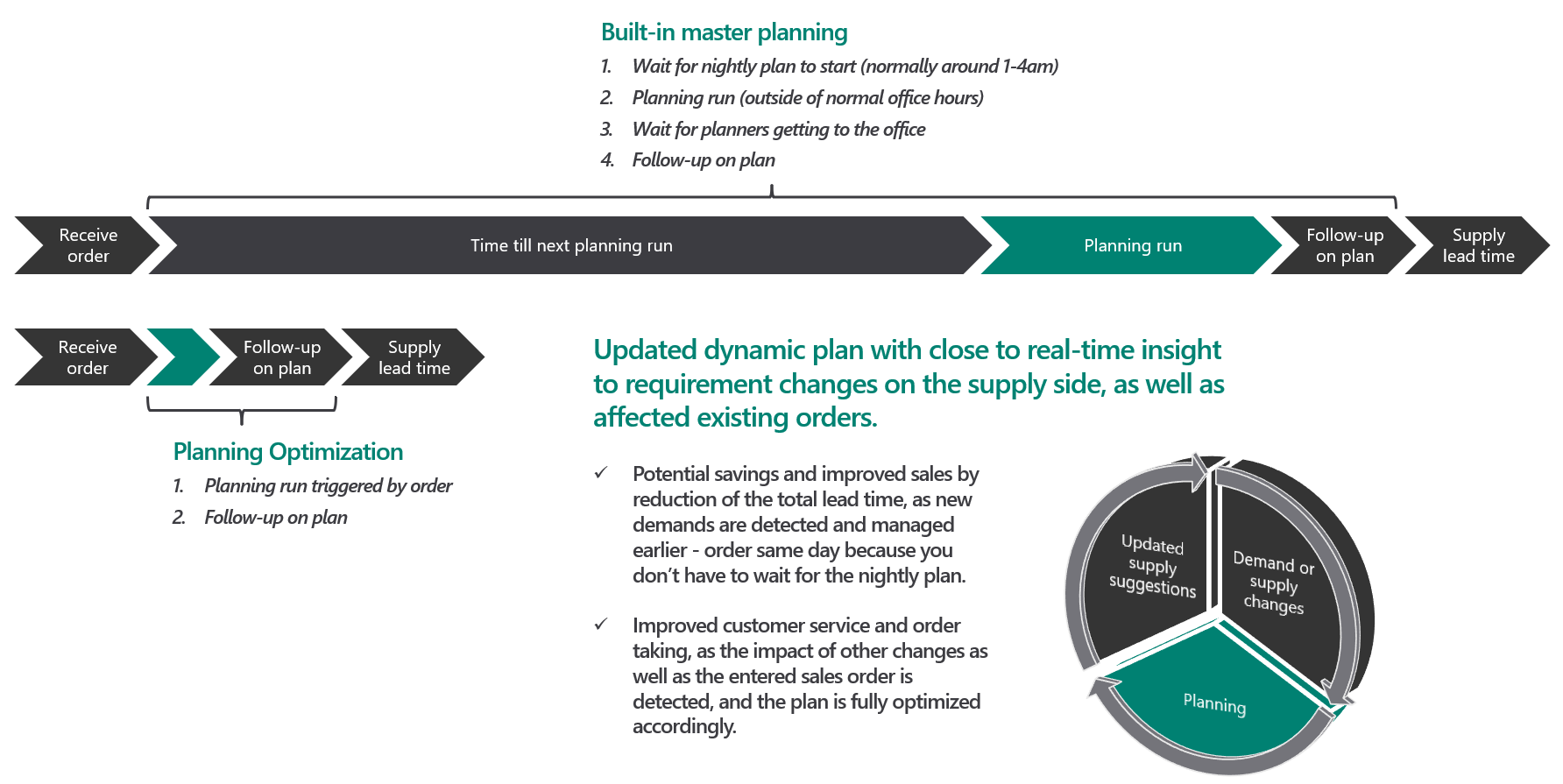
Update from Microsoft Business Application News: From hours to minutes – AlfaPeople takes new Planning Optim …
Microsoft Dynamics Masterplanning – Owning a manufacturing business, you know “good planning is everything!”.
However, if you’ve been doing product program planning in Microsoft Dynamics 365 Supply Chain Management, you also know the challenge: you need patience, because a planjob can take a good 8 to 9 hours.
With the last release wave, general availability since October 2020, planning optimization was therefore introduced as an add-in for Microsoft Dynamics 365 SCM. Planning optimization has been outsourced into a separate service to reduce the load on the SQL database and thus enable you to plan faster during business hours, especially when dealing with larger data volumes.
Reduction of the runtime for a planning simulation to a few minutes
Especially if you have 24/7 shift work in your company, the planning optimization offers you a new possibility to execute planning runs at any time without affecting the operative business in terms of system performance.

Another advantage: if the planning run is interrupted, you can react immediately, eliminate the sources of error and restart the planning run directly. Nightly planning runs are therefore a thing of the past thanks to planning optimization!
Since the planning simulations can be implemented in your daily business during your normal office hours, you can also plan your inventory much more accurately and react more quickly for replenishments. This leads to a reduction in waiting times for your customers and thus to an improvement in your customer service.
Functional enhancements
By outsourcing the planning optimization as an add-in, not only the performance was optimized, but also functional enhancements were introduced
Plan filter:
You can create a plan filter to be applied during a planning execution. This allows you, for example, to restrict a plan to a specific group of items and ensure that no other items are included in the resulting plan.
If a runtime filter is also applied during the planning execution, only the intersection of both filters will be included in the execution.
Auto-firming:
Via automatic firming, planned orders can be firmed in order to automatically convert them into actual orders, transfer orders or production orders. In the context of planning optimization, automatic firming (confirmation) can be based on the order date, i.e. the start date. As a result, the lead time no longer needs to be considered as part of the firming time window. So, compared to the traditional planning engine, the firming time frame no longer needs to be longer than the lead time.
Planning with negative on-hand quantities:
In the case of negative inventory quantities, the planning engine treats the quantity as zero in order to avoid oversupply. Therefore, the planning optimization aggregates the inventory quantity at the lowest level of the coverage dimension. If the aggregated stock quantity at the lowest level of the coverage dimensions is negative, it is assumed that the stock quantity is actually zero.
Safety margins:
With safety margins, you can set up a buffer time that goes beyond the normal lead time. This allows you to take into account additional times, for example, for processing and picking goods at goods receipt in planning and thus ensure that your supplier delivers earlier. Microsoft has introduced three types of safety margins for planning optimization:
- Reorder margin
- Receipt margin
- Issue margin
All margins are defined in days. You can also set up several surcharges, which are then added to a total time.
Planning Optimization or Masterplanning-Engine?
What does this announcement mean for you in concrete terms?
By outsourcing the planning optimization to a separate service, Microsoft has also announced to deprecate the built-in masterplanning. As of October 01, 2021, manufacturing scenarios as well as distribution scenarios will no longer be supported via the built-in masterplanning and you will have to use the new planning optimization.
However, this change will only affect you if your environment is deployed in the cloud.
If you are using Microsoft Dynamics 365 SCM on-premises, you can continue to use the built-in master scheduling engine after October 2021. Microsoft will not provide any further feature enhancements for locally deployed instances.
It’s also worth noting that the new planning optimization will only be deployed and enabled for customers in the cloud. Good news: the basic functions of Planning Optimization are included in your current licenses.
If you are using Masterplanning in your Microsoft Dynamics 365 Supply Chain Management, you should not hesitate any longer and plan a migration to Planning Optimization. We at AlfaPeople are here to support you.
Please reach out to us here, if you have any questions.




